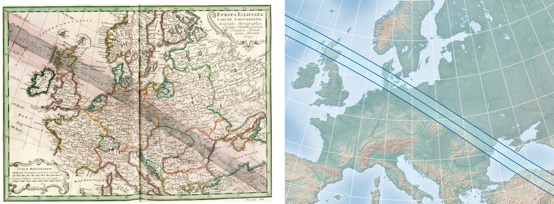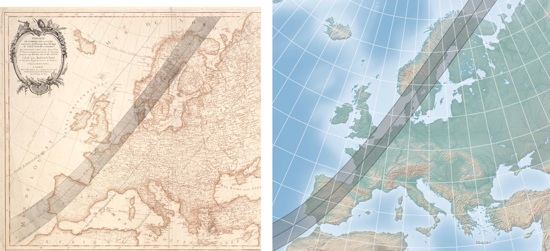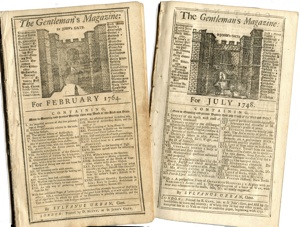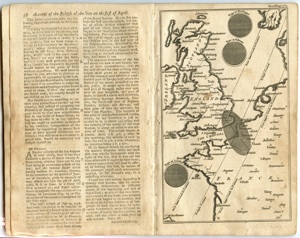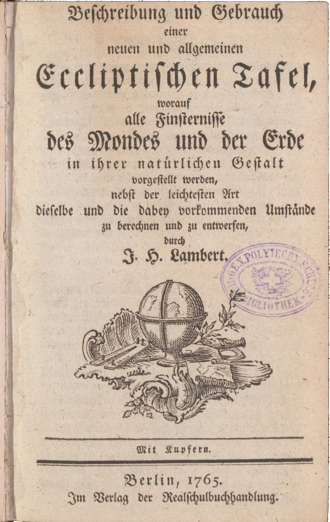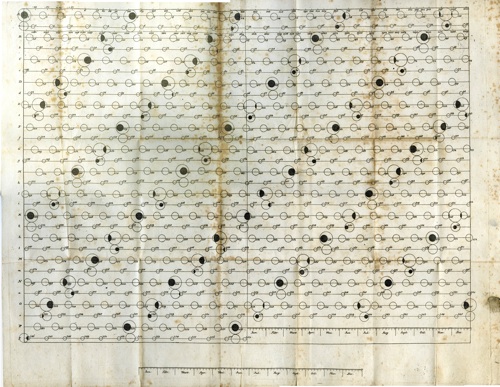The Atlas Coelestis
The collaboration between the cartographer Homann and astronomer Doppelmayr culminated in the 1742 Atlas Coelestis which contains plates of celestial maps of constellations and two plates which contain eclipse maps. This atlas collects many plates Homann and Doppelmayr created from earlier maps and atlases. The plates which appear in the Atlas Coelestis were used in many derivative works and have a complicated publishing history. Two maps with solar eclipses are shown in the gallery below
After the initial publication of the Atlas Coelestis, a revision was released in 1747 called the Atlas Novus Coelestis and contain two additional eclipse maps by George Maurice Lowiz, shown in the gallery below. These maps show the eclipse of 1748 superimposed to several hemispheric projections of the earth.
Madame Le Pauté and her eclipse map
Nicole-Reine Le Pauté was an accomplished French astronomer who made many calculations for the almanac Connaissance des Temps. In 1762, she many calculations for the annular eclipse of 1764 and compiled timings for the eclipse in 15-minutes intervals across Europe in an article for the Connaissance des Temps of 1763. She applied her calculations to the publication of the map shown to the right.
